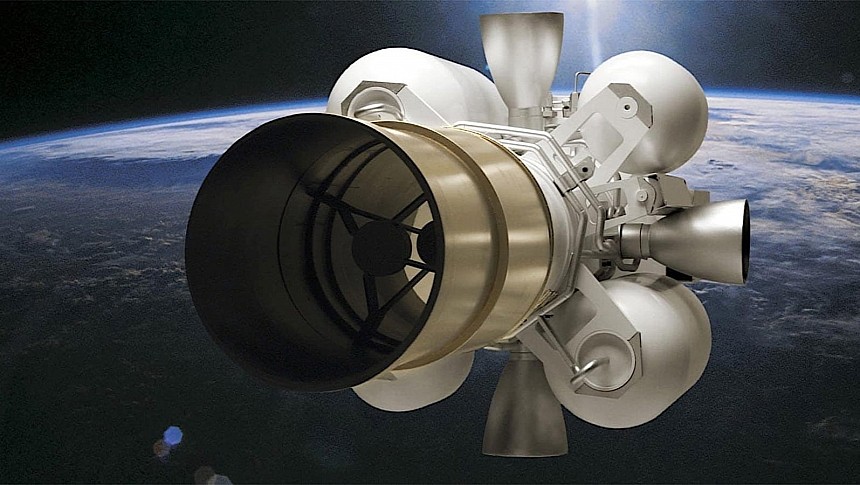Ballistic missiles are some of the fiercest weapons mankind has ever invented. The most potent of the bunch do not fly through Earth's atmosphere where they can be tracked and intercepted, but climb to the edge of outer space to essentially drop on their target's head at incredible speeds.
By definition, ballistic missiles are incredibly difficult to intercept because for most of their flight they are not powered in any way. Instead, they use ballistic (duh) principles to operate.
Such missiles are fired in the usual fashion, using the power of a rocket motor. Once they've reached the desired altitude, they enter something called free flight, when they head to the point where they can begin their descent. That last part, also called re-entry in the case of suborbital ballistic missiles, is when these things allow gravity to do its thing and drop them on the target.
There are ways, of course, to track, intercept and obliterate ballistic missiles, but those have mostly been put to use in the case of short-range ballistic missiles. When it comes to the more potent long-range ones, or even intercontinental ballistic missiles, work is just beginning.
The U.S. already has in place defense systems against such threats which it continuously tests in the hope they'll never have to be used. One of them is the so-called Exoatmospheric Kill Vehicle (EKV).
Made by defense contractor Raytheon, it is supposed to defend the U.S. against long-range ballistic missiles by destroying them while they are still in space. It requires no fancy warhead to do that, and it just needs to be guided properly to its target so it can forcefully slam into it and knock it down.
The thing is thus a kinetic-force weapon, and it's part of America's Ground-based Midcourse Defense System that is used to track such threats. It is essentially a three-stage rocket capable of flying out of Earth's atmosphere.
Once launched, the EKV uses a series of multi-color sensors governed by an onboard computer to point itself at the incoming missile, steering its way there by means of a rocket motor. Once it reaches it, it simply slams into it, and at near-hypersonic speeds that's more than enough to end the target.
Raytheon said this week that yet another test of the EXV was performed, this time the interceptor taking out an intermediate-range ballistic missile. The test took place somewhere in the Pacific region and was handled by the U.S. Missile Defense Agency and the U.S. Northern Command.
We're not given the specifics of the test, but we do know it was a successful one, and also the 13th such test for the intercept program. The mission also adds to Raytheon's record of 50 space intercepts so far, and comes at just the right time, given all the conflicts presently taking place in the world.
Such missiles are fired in the usual fashion, using the power of a rocket motor. Once they've reached the desired altitude, they enter something called free flight, when they head to the point where they can begin their descent. That last part, also called re-entry in the case of suborbital ballistic missiles, is when these things allow gravity to do its thing and drop them on the target.
There are ways, of course, to track, intercept and obliterate ballistic missiles, but those have mostly been put to use in the case of short-range ballistic missiles. When it comes to the more potent long-range ones, or even intercontinental ballistic missiles, work is just beginning.
The U.S. already has in place defense systems against such threats which it continuously tests in the hope they'll never have to be used. One of them is the so-called Exoatmospheric Kill Vehicle (EKV).
Made by defense contractor Raytheon, it is supposed to defend the U.S. against long-range ballistic missiles by destroying them while they are still in space. It requires no fancy warhead to do that, and it just needs to be guided properly to its target so it can forcefully slam into it and knock it down.
The thing is thus a kinetic-force weapon, and it's part of America's Ground-based Midcourse Defense System that is used to track such threats. It is essentially a three-stage rocket capable of flying out of Earth's atmosphere.
Once launched, the EKV uses a series of multi-color sensors governed by an onboard computer to point itself at the incoming missile, steering its way there by means of a rocket motor. Once it reaches it, it simply slams into it, and at near-hypersonic speeds that's more than enough to end the target.
Raytheon said this week that yet another test of the EXV was performed, this time the interceptor taking out an intermediate-range ballistic missile. The test took place somewhere in the Pacific region and was handled by the U.S. Missile Defense Agency and the U.S. Northern Command.
We're not given the specifics of the test, but we do know it was a successful one, and also the 13th such test for the intercept program. The mission also adds to Raytheon's record of 50 space intercepts so far, and comes at just the right time, given all the conflicts presently taking place in the world.








